30 Years of Ancient Forest International
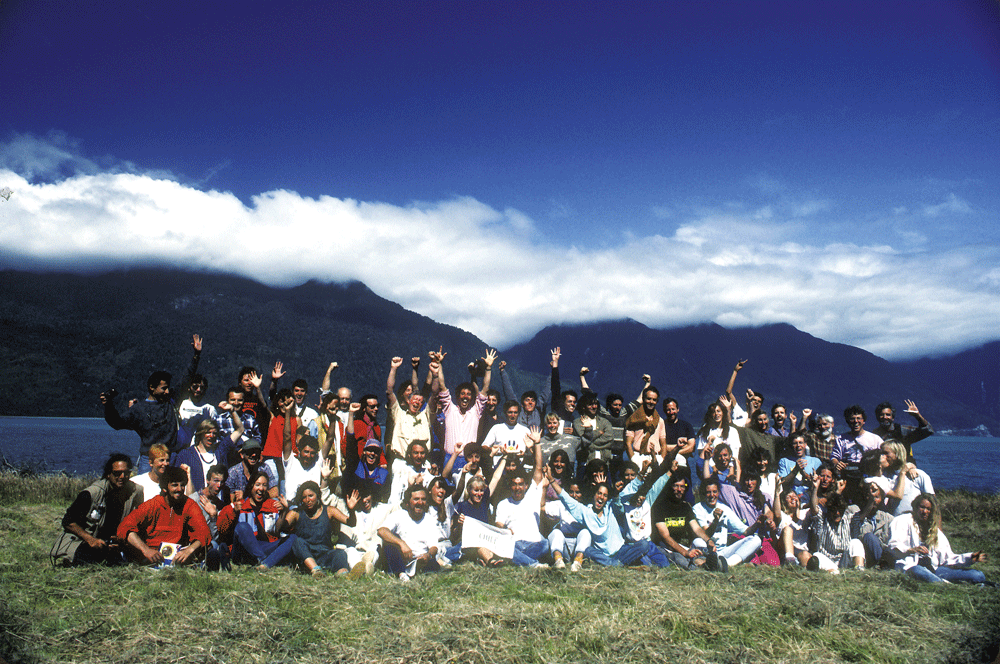
Ancient Forest International | Inspiring the Protection of Old-Growth Forests
In our Summer 2019 Forest River News issue, we celebrate 30 years of Ancient Forest International (AFI) inspiring the protection of old-growth forests in Chile, Ecuador, and Northern California.
AFI was inspired by South America’s majestic Alerce, the “redwoods of the Southern Hemisphere” and their rich temperate rainforest ecosystem. Rick Klein first learned of the Alerce in 1970, and his goal of experiencing them, coupled with anti-war pragmatism in steering clear of the Vietnam War, led Rick to become a park ranger in Chile in 1971. At that time, he didn’t find the giant Alerce trees that he had read about, but Rick and his pal Douglas Fir succeeded in hunting down and photographing Alerce in 1988.
Around that time Rick also led—and nearly killed—a different Doug into a different Alerce forest called Pumalín. According to Rick, when he took Doug Tompkins to see his first Alerce, the famed adventurer and philanthropist could have met his demise scaling down a giant granite wall, or from dehydration when an indispensable water supply along the trek turned out to be dried up. When they made it out alive, Rick recalls Doug Tompkins turning to him and saying, “That was fun, how much is it?” Rick replied, “$25 an acre”, and Doug went out and purchased his first large chunk of Pumalín.

Photo courtesy of Tompkins Conservation
Rick and AFI would continue to cheerlead and support Doug’s massive acquisition of wildlands for conservation in Chile. This was the start of a truly remarkable conservation achievement that just occurred. On April 25, 2019, Chilean president Michelle Bachelet and Kris Tompkins (who started Tompkins Conservation with her husband Doug Tompkins) finalized an agreement that completes the world’s largest transfer of land from private to public hands, and expands Chile’s national parkland by 10 million acres. The Tompkins Conservation donated slightly more than one million acres—largely consisting of Pumalín—and the Chilean government, for its part, contributed nearly 9 million acres of federally owned land.
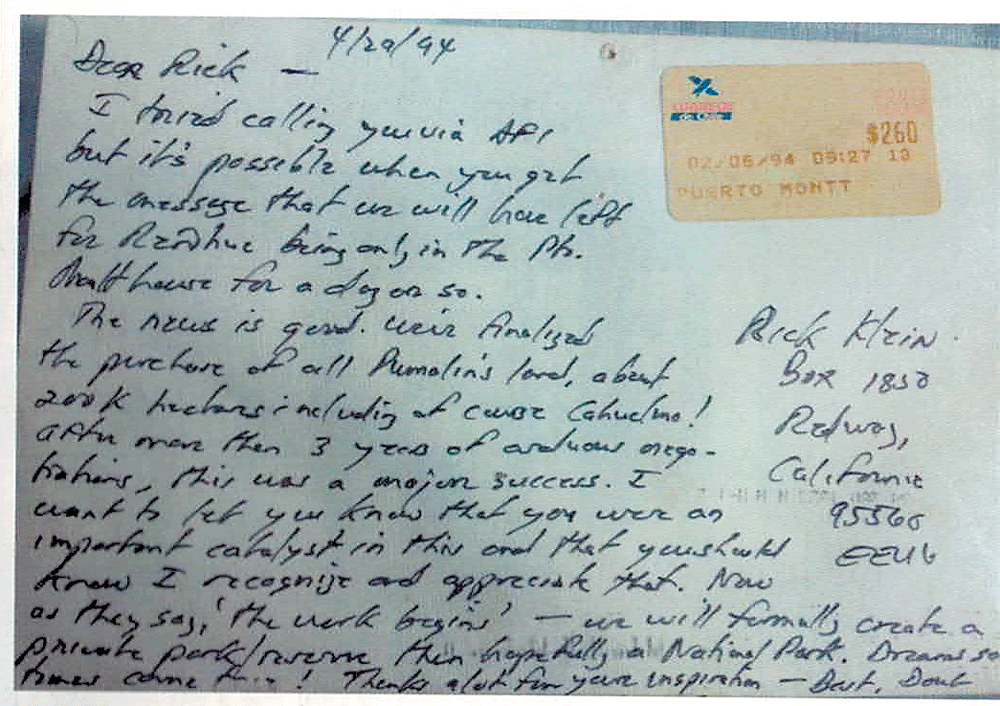
The postcard above– dated April 29, 1994– was mailed from Doug Tompkins in Puerto Montt, a city north of Chile’s Pumalín Park, to Rick Klein’s PO Box in Redway, CA.
In April, 2019, Pumalín Park was officially transferred from the Tompkins Conservatory to the Government of Chile to become a National Park, making it the largest transfer of land from private to public hands in the history of conservation.
AFI was Spawned from a Spirit for Trees
By Rick Klein
Ancient Forest International was born in 1989, at a time when the greatest standoff ever undertaken over a forest took place in the Headwaters Forest in North Coastal California. It consisted of 3,000 acres of the last great swatch of privately-held old-growth coastal Redwoods. Sit-ins, blockades, hostile confrontations, protester arrests, legal battles, prayer vigils, tree sits, occupations, and even deaths occured. Times were intense!
Douglas Fir and I had just returned from a trek high into the pristine fjords of Chile. He was arguably the first to photograph the majestic Alerce, the “redwoods of the Andes”, and presented his slideshow to a cadre of forest defense activists gathered in Garberville, California.
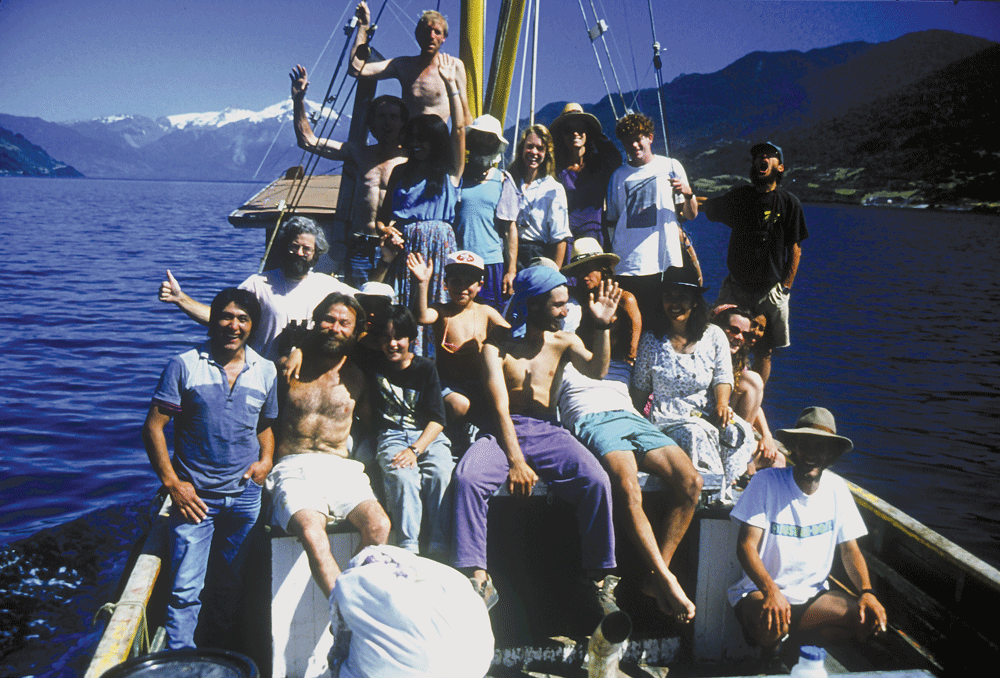
Photo by Harold Schlange
The slideshow focused on the giant Sequoia-like Alerce and its ecosystem, which was being pushed to the edge of extinction. Since 1531, this southern redwood has been extirpated from low lands, retreating only higher up along the Andean rocky slopes.
“What a lark!” these old-growth forest defenders thought. To find ancient, huge, unsung trees high up in Chilean fjordal mountains. What a positive and badly-needed jaunt to travel to see them! This was the very first of many expeditions that spawned Ancient Forest International as well as dozens of Chilean NGO’s, all dedicated to native forest appreciation and protection.
Alerce-hunting with Rick
By Douglas Fir
It could be said that the seed that would become Ancient Forest International was planted in the twilight of a late austral summer day in 1988 on a little flat stretch of trail descending out of Southern Chile’s Alerce Andino National Park. Rick Klein and I were emerging from our second plunge into primeval old-growth alerce forests, recently protected by the aforementioned park. We had lingered reverentially among the ancient cathedral trees, picked our way gingerly over the litter strewn forest floor (sometimes eight feet of moss coated, jack-strawed, entwined fallen branches tangled above solid ground), and attempted to capture the definitive photograph of these little known evolutionary pinnacles of the botanical world (in this I failed). Our guide on the first trip had told us that we were likely among less than a dozen human beings to experience these groves. But now on our way out we had plum run out of light. A slim rivulet of water paralleled the trail at that point, and so it seemed as good a place as any to stop if we didn’t want to stumble onward in the on-rushing darkness.
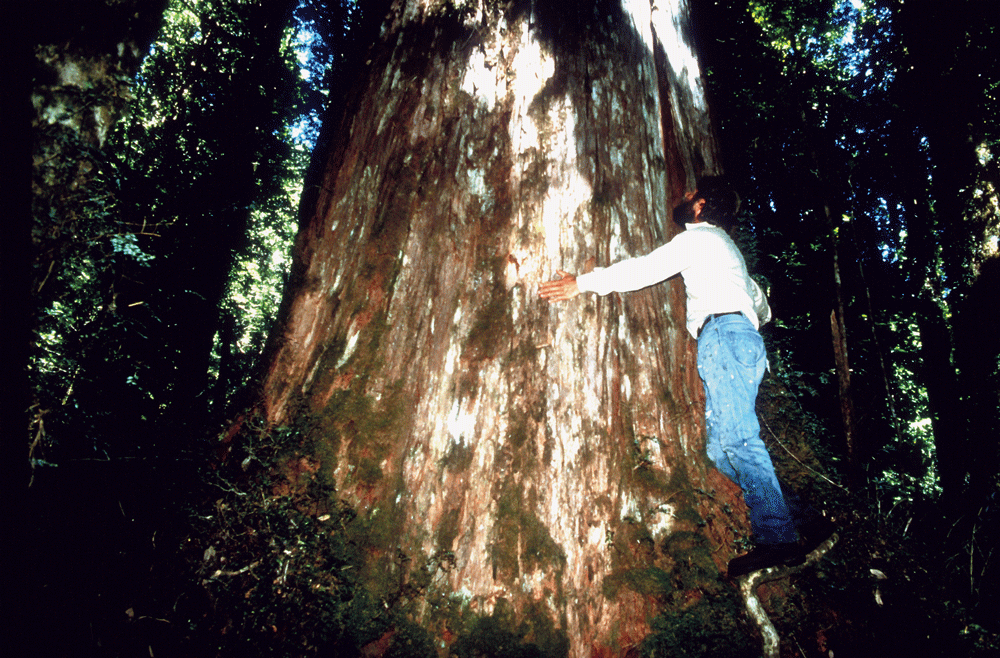
Rick was flushed with excitement as we bivouacked on this flat spot on a mostly descending ridge. In the previous month he had manifested a long-held dream, entering cathedral alerce forests twice here in Alerce Andino.
As we reflected over the past month’s experiences (which included being shanghaied on a 100’ sloop for nine days), Rick mused about the fate of the alerces, the lack of knowledge in North America of the existence of these forests, and the threat facing existing alerce groves outside of the protection of the national park system. What if there was an entity, an organization, a non-profit devoted to bringing these forests to the attention of the world and possibly raising money to purchase unprotected tracts? Could we effectively organize such an effort from our remote Humboldt refuge?
When Rick returned to Humboldt he forged ahead, inspiring a coterie of environmental activists whose energies had been focused on domestic issues to internationalize their scope. Paying initially out of his own pocket, he collected a staff made up of myself as Project Coordinator; Ami Goldberg as Administrator; and a host of volunteers. Rick attracted a number of local noteworthies to serve as AFI’s first board of directors including: Peter Childs, Fred Bauer, Suzelle, Andy Barnett, Lloyd Hauskins, and Jared Rossman. Jared’s brother Michael also was brought on as science advisor.
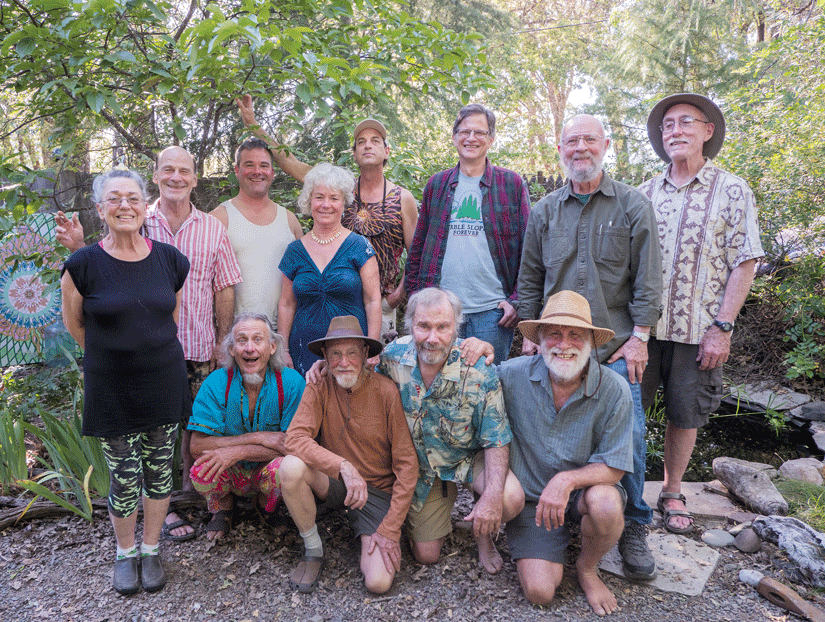
At Rick’s urging, the board authorized AFI’s first project: Expedition Alerce. Rick reasoned that in order to bring attention to the facts and plight of the southern forests, an international expedition splashy enough to attract major media attention was in order. Expedition Alerce was essentially a reprise of our earlier discoveries in Alerce Andino, but pushing beyond to terra incognito. Forest ecologist Dr. Paul Allaback signed on, giving the effort scientific credibility. Rick engaged Scott Holmquist (later to go on to create a number of projects that seek to memorialize the SoHum experience, notably the art/archive piece, chronic freedom) to organize a film crew to document the trek, which he did, landing the documentary, Expedition Alerce: Lost Forests of the Andes, on The Learning Channel, where it aired repeatedly in 1990.
The energy and excitement generated by the first expedition was contagious and garnered AFI its first funding stream and its first acquisition project, Santuario Cañi, ironically not an Alerce forest. It was, however, Chile’s first private park and its premier forest education project. It was through the Cañi that the introductions to Yvonne Chouinard (founder of Patagonia clothing company), Doug Tompkins (founder of The North Face, and Esprit) and Alan Weeden (New York financier) occurred. These three would be AFI’s primary sources of support for the initial years. AFI would go on to organize expeditions into the Chilean wilderness for the next several years as Doug Tompkins dug into southern Chile at the beginning of his effort to protect vast quantities of Patagonian wilderness, the culmination of which we currently are celebrating.
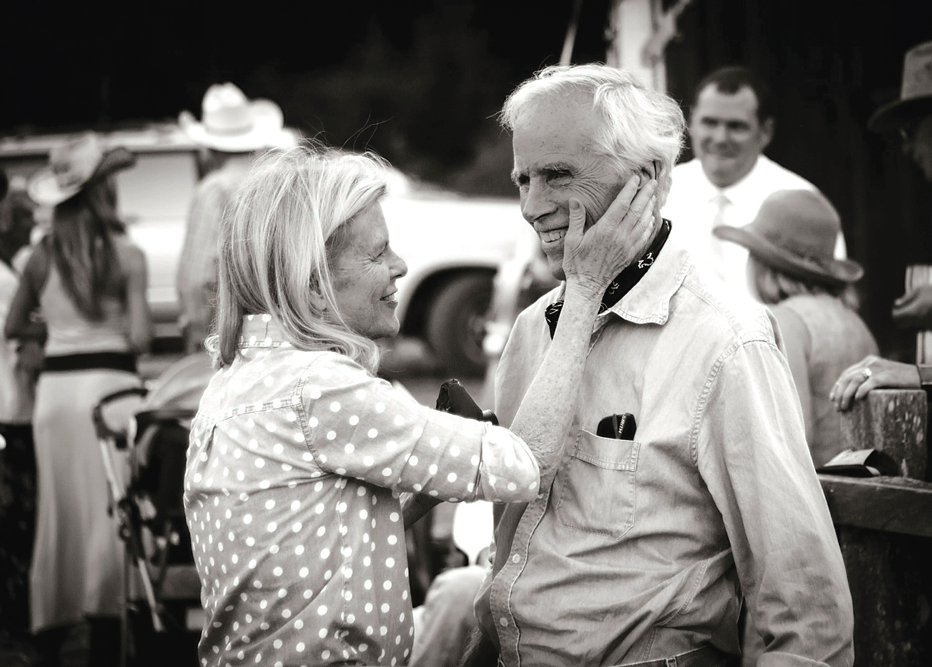
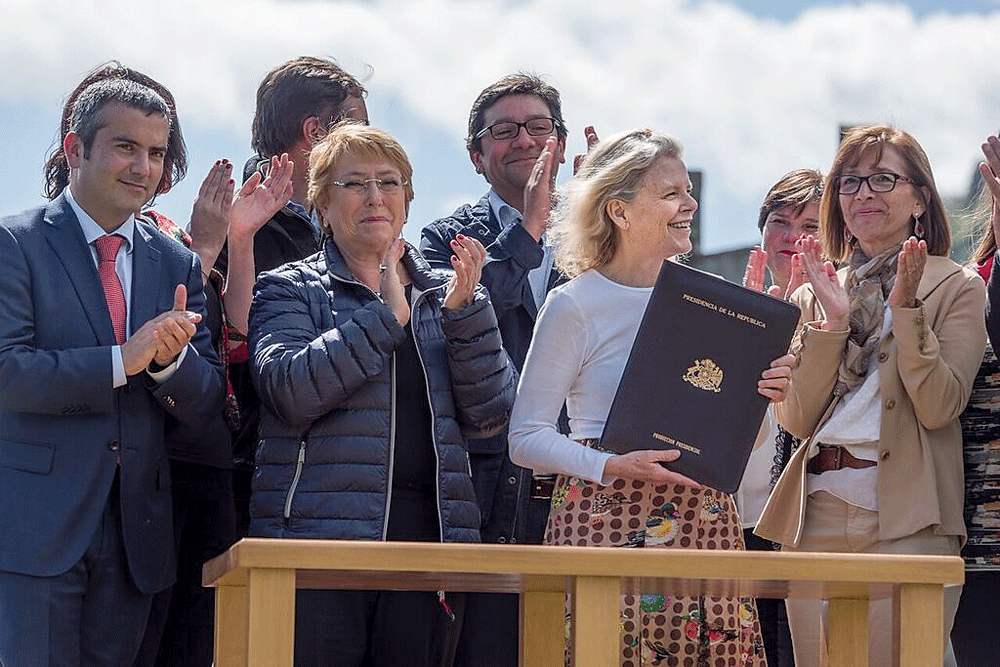
AFI Inspired Protection of “The Yosemite of South America”
By Douglas Fir
The Cochamo Valley sits near the top of Chile’s Reloncaví Sound, a long slender finger of briny sea some 70 miles from open water, a picturesque sliver of the ocean slotted between verdantly forested, steep slopes dropping precipitously 3-4000’ from the often-snowy heights lining the sound. The valley’s floor has been cleared and grazed for 140 years but the granite walls and domes, the primary alerce forests, and the crystal clear river provide an extraordinary wilderness experience.
Following AFI’s first expedition in the area in 1993, we began calling the glacially carved Cochamo Valley “The Yosemite of South America.” Now, when you do a web search for Cochamo, two out of three sites say something similar, including the Chilean sites, the owners of which have probably never been anywhere near Yosemite. So, amongst AFI’s lesser accomplishments, we created a meme (even if that word didn’t exist when we did it).
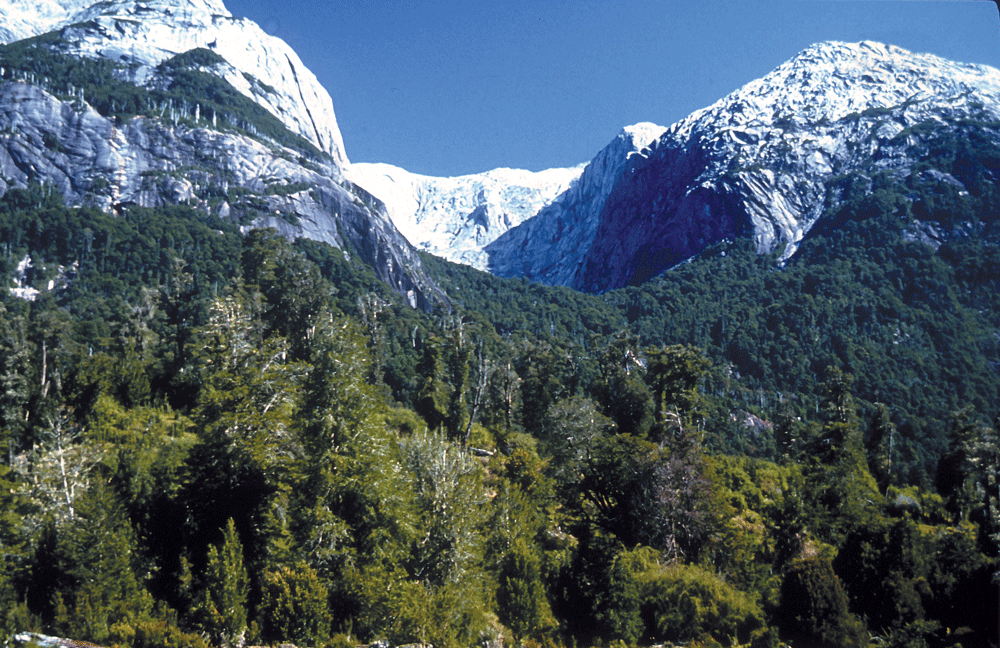
The comparison with Yosemite works when it comes to the 3,500-foot sheer granite walls topped by magnificent domes and cut by waterfalls, providing breathtaking visuals and numerous technical climbing challenges. But the analogy ends there. First, the valley is in private ownership as opposed to being part of Chile’s extensive national park system. The fact that landowners have chosen to protect their land and create income-generating recreational opportunities testifies to the fact that when locals recognize that their region has amenity and resource values that also yield economic benefits, they can be encouraged to preserve them.
AFI can claim some credit for this. In 1994-95 I lived in Cochamo for four months. Along with organizing a guide training program, a large part of my work consisted of helping people understand the extraordinary resource that they had, one that would serve them without exploiting and degrading their environment. A few years later, AFI secured funding for a brilliant Chilean activist and environmental scientist, Elisa Corcueras, to develop a management plan in conjunction with the community of Cochamo. That effort served to consolidate the community’s dedication to preservation and tourism.
Another way that the Cochamo Valley and the Yosemite differ is that the road only penetrates four miles from the Valley’s mouth. To arrive at the heart of the valley where the great, great walls ascend, one needs either to walk or ride a horse. Construction of the road by the military engineers began in the last month of my stay. Because I learned that the military had not taken out the required environmental permits, I filed a protest with the newly organized equivalent of the U.S.’s EPA. Subsequently, AFI was instrumental in finding the funding for the community to mount a successful legal challenge that has permanently prevented further extension of the road.
The Wikipedia article on Cochamo includes the comment: “Recently, ecotourism has become a constantly growing activity in the area.” Inevitably, the valley would have been discovered, but AFI’s work and expeditions into the area really put it on the map and helped create what is maturing as a sustainable ecotourism economy.
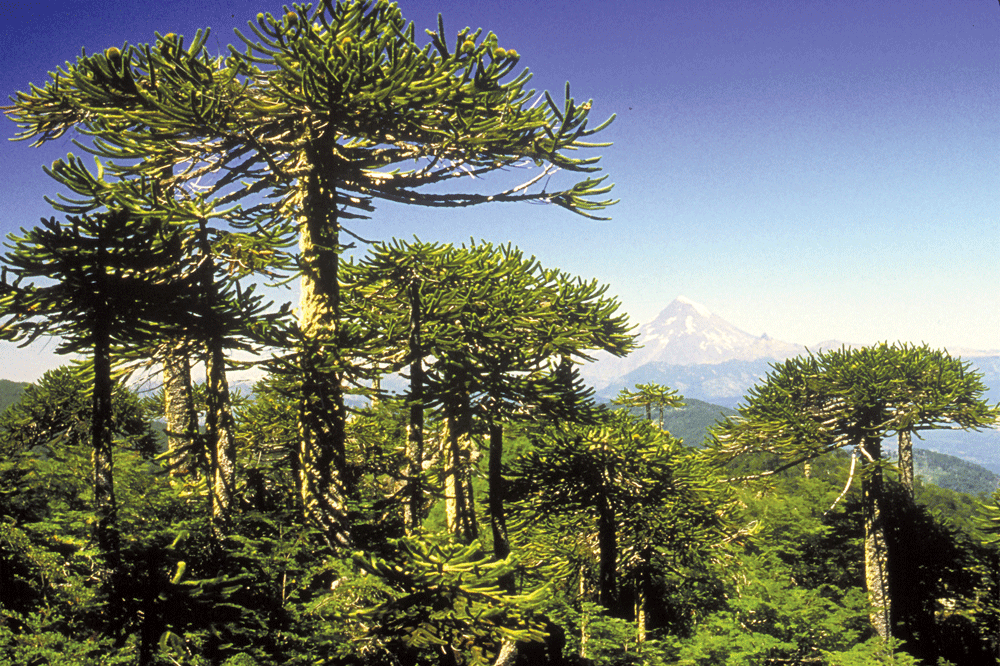
AFI Helped Protect Key Biological Corridor in Ecuador
By David Walsh
The transfer of Pumalín Park into the Chilean national park system is not the only victory AFI is celebrating on this 30th anniversary. In February of 2019, we successfully negotiated the sale of the Pañacocha Lodge to a private tourism company, culminating almost 20 years in the leadership role of establishing and defending a 140,000-acre primary tropical forest reserve in the Ecuadorian Amazon.
Like many activists in Humboldt County, I cut my baby teeth during the Headwaters Forest campaign, opening the Arcata Action Center in 1989 to support Forest Forever signature gathering. That same year, as a member of the Rainforest Action Group at Humboldt State, I was involved in very successful fundraising events to purchase primary forests on the western slope of the Ecuadorian Andes as part of Los Cedros Cloud Forest Reserve. It was around this time that I heard about Rick Klein and the work AFI was doing in Chile.
Then a project in 1992 with the Centro de Investigaciones de Bosques Tropicales engendered my lifelong affinity to the jungles of Ecuador. To assist in physically demarcating a million acres that had recently been adjudicated to Ecuador’s Huaorani contacted and un-contacted bands, we spent months in the Amazon bushwhacking with machetes and living off of the land. As a backdrop, Ecuador was in the grips of World Bank and IMF deregulation of the oil industry, and plans were on the table to build the Maxus Road into the heart of the Yasuni National Park. This road was eventually built, causing horrendous fragmentation, colonization, and pollution.
Around 1998, AFI partnered with Earthways Foundation, Rainforest Concern, and Rainforest Information Centre in fundraising to acquire the Pañacocha Lodge, a 137-acre (55-hectare) property with a backpacker-style lodge. The coalition succeeded in purchasing the lodge in 1999-2000.
The strategic in-holding of the Pañacocha Lodge in the Bosque Protector Pañacocha positioned AFI as a central player and advocate to influence petroleum development policy in the western Amazon. During our tenure, the Bolivarian revolution saw Ecuador nationalize the oil concession known as Block 15 from Occidental Petroleum, and take a lead role in managing their own natural resources. In gold mining and other sectors, due mostly to Chinese investment, this has not worked out very well. But our advocacy during this transition most certainly led to the minimization of impacts on this pristine Amazonian frontier.
The Pañacocha Lodge is located in the narrow gap between Ecuador’s two largest protected areas in the Amazon: the 982,000-hectare Yasuni National Park and the 600,000-hectare Cuyabeno Wildlife Reserve. The Bosque Protector—a land status in Ecuador that restricts timber harvesting—was established in Pañacocha in 1995 by grassroots efforts to protect the area’s important values as a Biological Corridor. Without a Management Plan and strong advocacy, however, this designation did little to prevent fragmentation and unbridled colonization.
AFI helped fund the creation of a Management Plan for the 56,000-hectare Reserve and shepherd the Management Plan through the Ecuadorian Ministry of the Environment. As a result, Ecuador adopted what are called “Best Management Practices” for the first time in history. AFI also helped gain recognition for the conservation of Yasuni-Pañacocha-Cuyabeno biological corridor in the
Ecuadorian Oriente.
The only way to truly understand the full scope of the conservation victory this represents is to Google Earth the area. Just north of the Pañacocha lagoon you can see the fine cleared line of a pipeline cutting south and east through the reserve. There are no roads, no clearings, no colonization, or oil palm plantations in the heart of the reserve. While there is some oil development conducted by the national oil company, it is nevertheless the first example of minimal impact development ever carried out anywhere in Ecuador, including in national parks. This is a direct result of AFI’s work within the Ministry of the Environment to advocate regional planning, starting with Pañacocha.
The Correa government closed thousands of non-profits in 2010. We were forced to sell the Pañacocha Lodge or have it nationalized. The reserve will very likely experience future threats such as road building by regional entities and colonization. AFI will continue advocating to make sure that doesn’t happen to this vital Biological Corridor.
AFI in California
By Lynn Ryan, AFI California Program Coordinator
From the Oregon border south and from the Pacific Ocean east, Ancient Forest International works across a fragmented yet still-viable landscape
In 2000, I wandered into the Ancient Forest International (AFI) office in Redway looking for volunteer opportunities. AFI and Save the Redwoods League had just raised $7 million to purchase, transfer to Bureau of Land Management, and preserve 3,800 acres of second and old-growth forest, along with neighboring conservation easements, in order to protect an intact wildlife corridor connecting two large protected ecosystems on either side of the Mattole river valley. This was the Redwoods to the Sea Project, and the nation’s first wildlife corridor initiative to hit the ground.
The Environmental Protection Information Center (EPIC), the Redwood Chapter of the Sierra Club and local watershed group Friends of Gilham Butte had successfully litigated to designate Gilham Butte lands as a Late Successional Reserve that anchored the project between the Eel and Mattole rivers. These critical BLM stepping stones protect connectivity between Humboldt Redwoods State Park and the King Range National Conservation Area, and have since doubled in size.
Shortly after, in response to a threatening timber harvest plan, the Stable Slopes campaign added around 700 acres to the DeWitt Redwoods State Natural Reserve right across the Eel River from the town of Redway. Currently, community interest is rising in extending hiking and biking trails through the Stable Slopes forest addition to the Dewitt Redwoods State Natural Reserve, located across the South Fork Eel River from the town of Redway. AFI and residents who brought about that acquisition 10 years ago are starting to explore possibilities for the town’s scenic backdrop, also known as Redway Ridge. Stay tuned!
Empowered by the success of Redwoods to the Sea, AFI wrote grants and jumped into the California Wildlands Project, part of a nationwide connectivity campaign. We helped coordinate efforts of place-based groups like LEGACY—a coalition of The Landscape Connection, Map-Rap, Lost Coast League, Mattole Restoration Council, Friends of the Eel River, Willits Environmental Center, North Coast Environmental Center, Siskiyou Wildlands, Friends of Del Norte, and others—to permanently protect hundreds of thousands of public acres as Wilderness. This included the organizing of hundreds of public hikes out of the AFI office: forest treks where we searched for old trailheads, fixed flat tires, got lost and found, laughed a lot, and slept under the stars in the middle of nowhere.
We educated legislators in Sacramento and Washington, D.C. over the following years, culminating in the 2006 Northern California Coastal Wild Heritage Wilderness Act, federal legislation that added 273,000 North Coast acres to the Federal Wilderness Preservation System. Areas permanently protected into the Federal Wilderness Preservation System along the Eel River include Red Mountain, Elkhorn Ridge, Cahto Peak, Yuki, Sanhedrin, and additions to the Yolla Bolly and North Fork Eel. The King Range Wilderness was designated.
Following that victory, AFI devoted time and energy to supporting a multitude of other California projects. Our first comments to CalTrans on their Richardson Grove project date back to 2005, as do our efforts to preserve ancient forest habitat in Rainbow Ridge along the northeast boundary of the Mattole watershed. Ongoing AFI efforts include promoting a public trail rather than a railroad along the Eel River; saying no to offshore oil drilling; coordinating efforts with EPIC and other local and statewide groups to stand up to egregious timber harvest plans; and preserving roadless areas, critical habitat, and their animal species. AFI may have numerous accomplishments to celebrate over the past 30 years, but we aren’t done yet!
For more information:
www.ancient-forests.org
